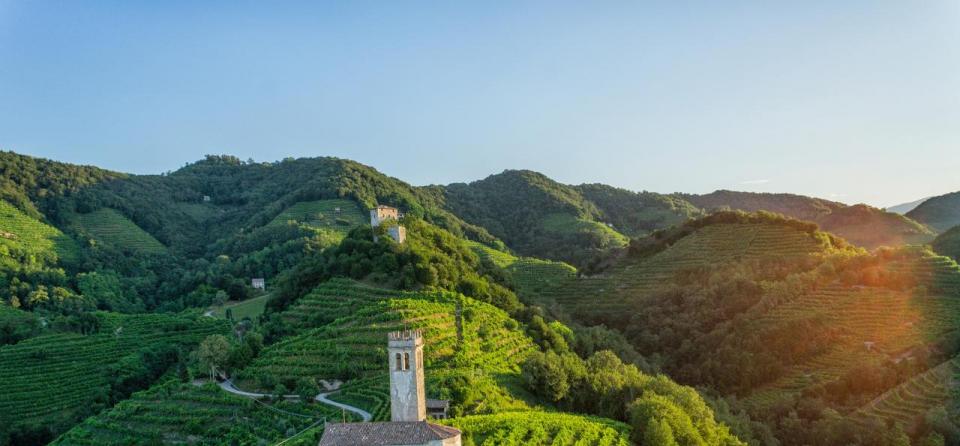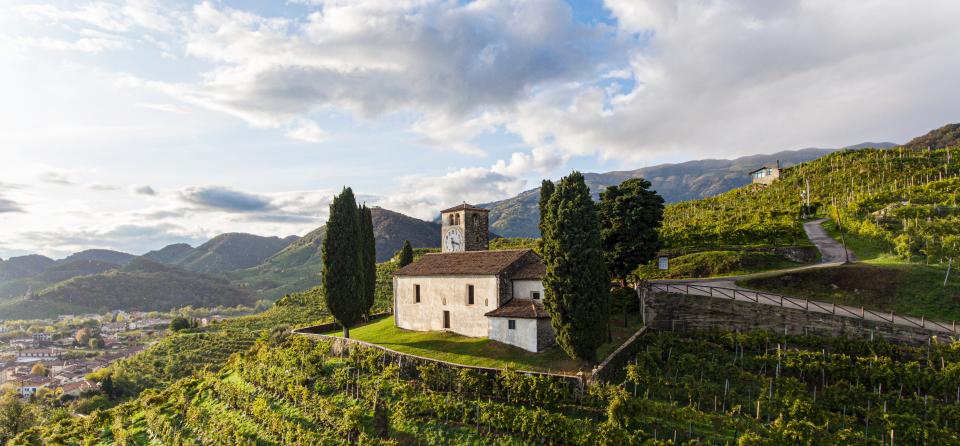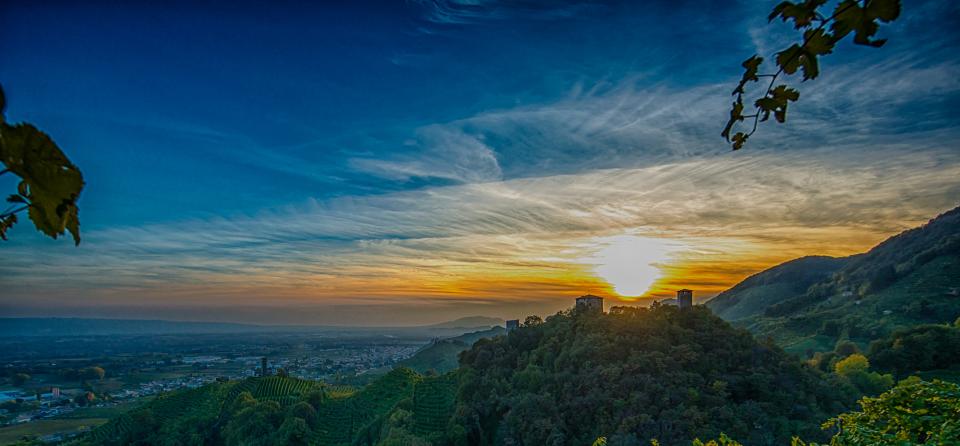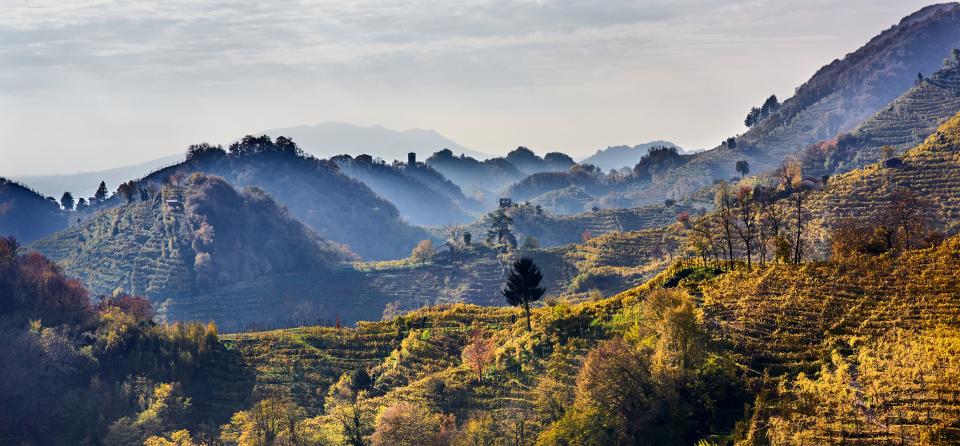Farra di Soligo
Member of the Italian National Network
Farra di Soligo is located in the heart of the UNESCO World Heritage Site “The Prosecco Hills of Conegliano and Valdobbiadene” and along the famous Prosecco and Wine Road of the Hills of Conegliano Valdobbiadene, the oldest of its kind in Italy. Here, the hills are dotted with vineyards: man and the environment have created a unique cultural landscape, a natural mosaic which has given us Conegliano Valdobbiadene Prosecco Superiore DOCG, the famous wine which is exported throughout the world.
The hills are called “heroic slopes” because, due to the morphology of the land, the grapes are harvested almost exclusively by hand. The name Farra has Lombard origins because “fare” were family groups found in warrior Lombard society. In the 10th century, imposing hilly defences were built to protect the lowlands from regular raids by the Hungarians. The Credazzo Towers, three defensive towers connected to each other by a wall, still dominate the landscape, a reminder of that chapter in local history. The vicissitudes of the fief of Credazzo mainly focus on the noblewoman Gaia Da Camino, mentioned in canto XVI of Dante’s Purgatory, who married Tolberto III’s cousin, thus uniting two branches of the powerful Caminesi family.
The area was the scene of much fighting and destruction during the First and Second World Wars. In 2008 the Municipality of Farra di Soligo was awarded the Bronze Medal for Civil Valour for the massacre of eight civilians who were shot by Nazi Fascists in the summer of 1944. The landscape is dotted with small churches perched on hilltops, which are real treasure troves: there is the church of San Martino, which contains an urn from which hopeful couples extract the name of the child they so desire, the medieval church of San Vigilio, which preserves some beautiful 15th-century frescos, the church of San Lorenzo, which was part of the Credazzo fiefdom, the hermitage of San Gallo and the Sanctuary dedicated to Our Lady of Sorrows in the pretty village of Collagù, where the remains of the martyr of St Emilio have been laid to rest. Further to the south is the church of Madonna dei Broi, where recent restoration work has revealed beautiful frescoes dating back to the end of the 13th and the beginning of the 14th century. There is also the church of Santa Maria Nova, commissioned by the noble Rizzardo da Camino who survived the plague of 1348; inside are charming paintings of the saints who were most venerated in the northern Treviso area.
There are many routes winding through the area which can be explored either on foot or by mountain bike, from the low-lying countryside to the top of the steep hilly slopes, allowing visitors to discover the natural and cultural treasures of the Municipality of Farra di Soligo. As well as Conegliano Valdobbiadene Prosecco Superiore DOCG, the many farms belonging to the Regional Project for Small Local Productions produce artisan cured meats and other typical products.
Since 1883, the famous Latteria di Soligo dairy has made premium fresh products, including milk, cheese, Casatella Trevigiana PDO cheese and Mozzarella TGS.
Events and festivals celebrating rural life keep local traditions, food and wine alive, in particular:
- the famous Valdobbiadene DOCG Festival in Col San Martino, an important showcase for wine producers which attracts numerous visitors; - “Rive Vive” in Farra, a walk through the hills enjoying local food and wine;
- “Calici di Stelle” evenings in Soligo, tastings of wines from the ancient Colfondo, obtained from traditional secondary fermentation in the bottle, to the more modern Conegliano - Valdobbiadene Prosecco Superiore DOCG produced in autoclaves;
- “Concerto Tra Torri e Stelle”, a concert organised in July by the local San Lorenzo Choir in a natural amphitheatre nestling between the hills and the Credazzo Towers. Lastly, there are important sporting events, like the “Trofeo Piva” international cycling race which is held the first Sunday of April, the “Cross Country tra le Torri” cycling race at the beginning of May and many other culinary and cultural events.
